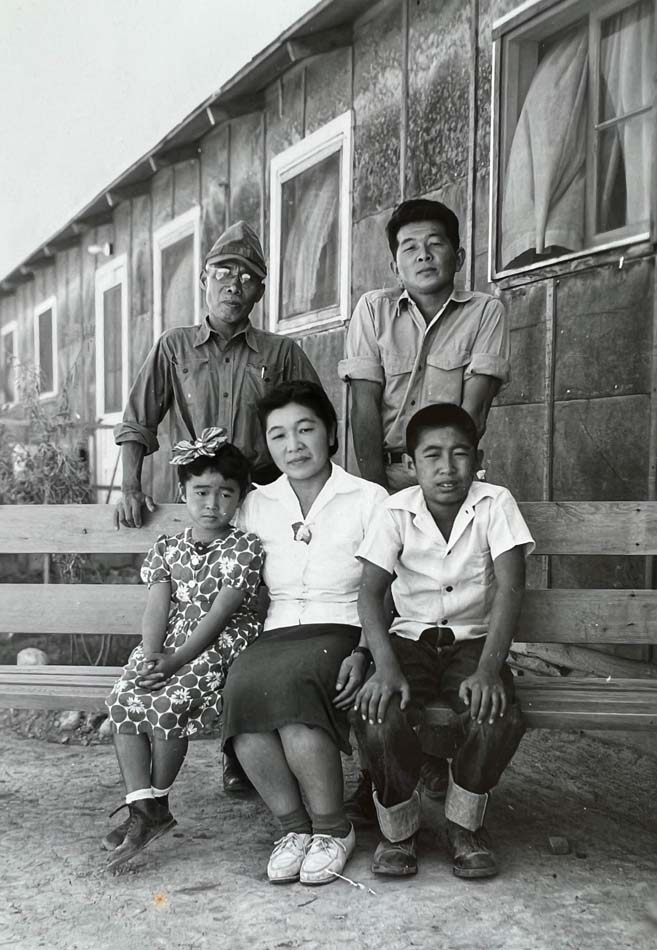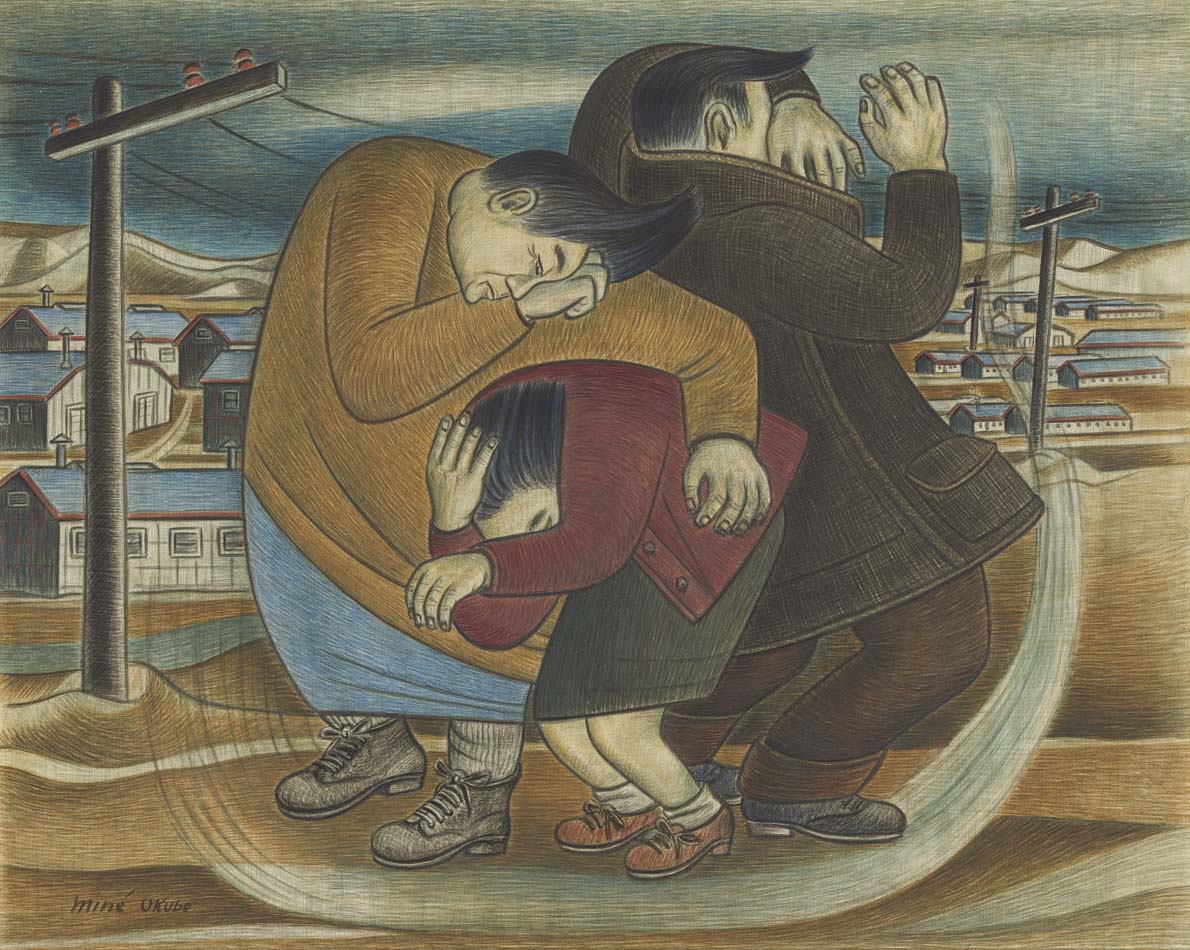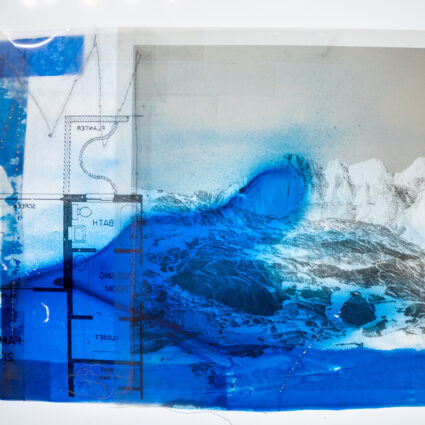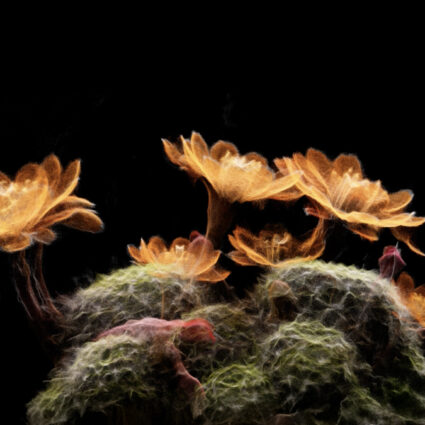The narratives of the many racial and ethnic minorities whose experiences have indelibly shaped both Utah and American history deserve recognition and reckoning.
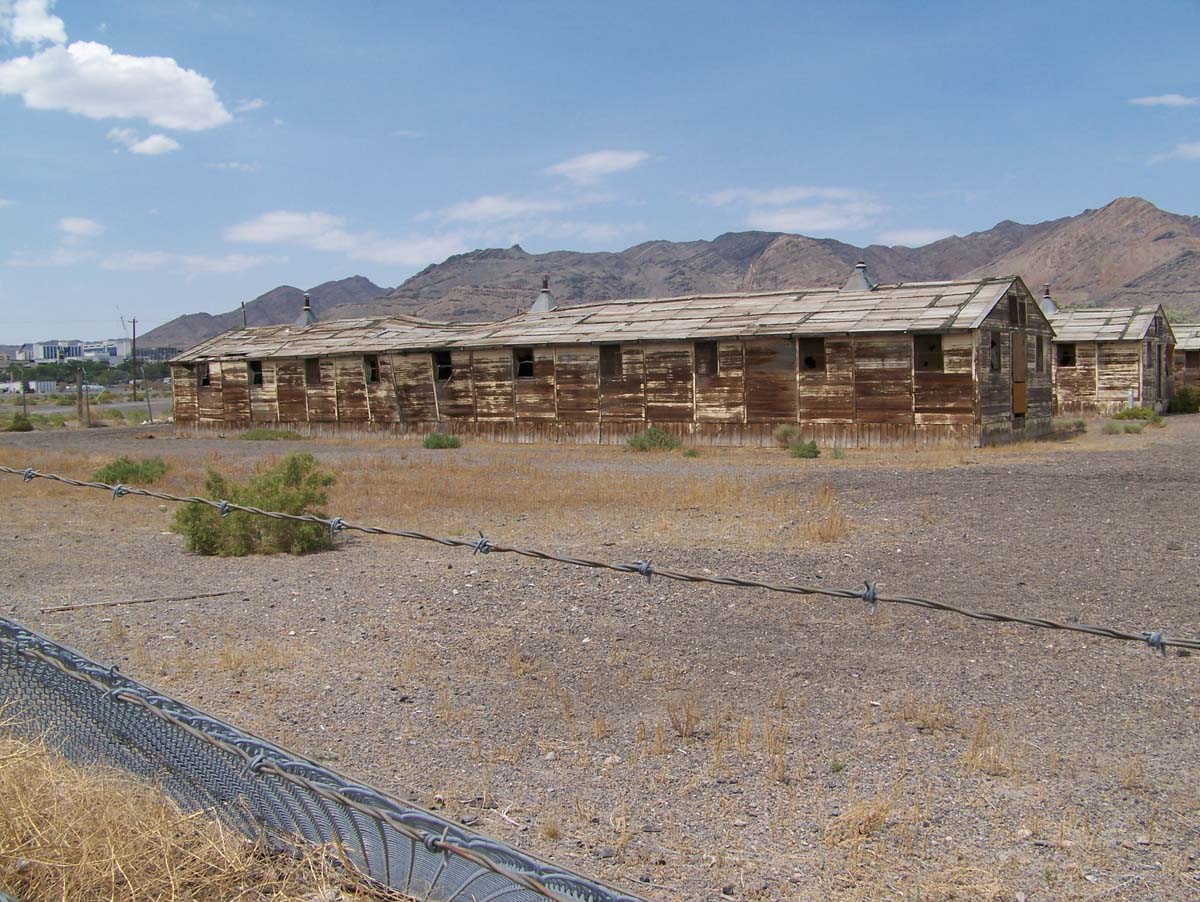
This article is part of our Living Histories series, a continuation of the ideas explored in Southwest Contemporary Vol. 9.
The weeks after Christopher Nolan’s Oppenheimer swept the 96th Academy Awards, nabbing the coveted Best Picture award, the direct legacy of the subject’s work, among other calamities the West has endured this century, continues to reverberate throughout the Southwest.
Utah’s west desert has a notable connection to the Oppenheimer fable—on the border of Nevada, the small gambling town of Wendover is an unlikely harbinger of an American tragedy. It’s here that one can still see abandoned military barracks and other structures from the Second World War. Most notably, Wendover houses a museum to the Enola Gay hangar, the aircraft that carried Oppenheimer’s atomic bomb that detonated on Hiroshima and Nagasaki from August 6 to August 9, 1945, killing between 129,000-226,000 souls.
Just as experiments in New Mexico were underway to launch the atomic assault on Japan, more than a hundred thousand persons of Japanese ancestry living in the United States were given ten days to vacate their homes and pack only what they could carry before being shipped to prison camps throughout the U.S., many of which were in the American West. Despite Franklin D. Roosevelt’s Executive Order 9066, which was famously upheld by the Supreme Court in Korematsu v. United States, 323 U.S. 214 (1944), at the war’s end, not a single person among those imprisoned would be charged with espionage against the United States.
In a remote area three and a half hours southeast of Wendover, the town of Delta is a living reminder of this episode of racial injustice. Delta’s legacy as the site of the Topaz Internment Camp, which during the Second World War imprisoned more than 8,000 persons of Japanese ancestry, is tragically intertwined with that of Wendover’s. For just as thousands of persons were unjustly detained for their ethnicity alone, technicians were preparing the Enola Gay to carry Oppenheimer’s atomic bomb to the far reaches of the globe to annihilate thousands of people.

Monuments to the disenfranchised
Utah’s association with Mormons—the Church of Jesus Christ of Latter-Day Saints—is ubiquitous within popular culture. It’s unsurprising then, that this geography contains various reminders of the oppressed people whose existence marked an obstacle in the quest for religious and racial hegemony starting in the mid-19th century. Commemorations varying in scale and message are scattered throughout the state for those who are purposeful enough to seek them out. In many cases, such remembrances were brought into fruition by the very populations the monuments commemorate. The aim of this essay is not to comprehensively catalogue the state’s commemorative which depict racial or ethnic minorities, but instead to highlight a few notable examples that reveal a history of racial subjugation and violence, while simultaneously celebrate and validate the existence of those who have been marginalized.
The placement of these remembrances in disparate and often remote areas of the state evidences this historical suppression, which, to be sure, is not unique to Utah. The isolation of these sites therefore inhibits our ability to digest the gravity of what happened within them because of the continual difficulty in accessing remote areas outside of the city centers. In a political climate where many are championing a suppression of any history that strays from the predominant narrative of patriotic lore, and where books that question such simplistic renderings of the past are being banned from school shelves, writing about the histories of the otherwise suppressed is more important than ever.
While the initial LDS settlers sought to name the state now known as Utah “the State of Deseret” as an homage to a term within the Book of Mormon, the federal government’s rejection of this suggestion led to the designation of “Utah,” from the Ute Tribes, who along with the Shoshone, Paiute, and Goshute Tribes, served as the ancestral stewards of this region. I have written elsewhere about the public monuments to Indigenous figures in Salt Lake City, such as Cyrus Dallin’s Brigham Young Monument (1897) and Statue of Massasoit (1922) and Millard Malin’s Sugarhouse Pioneer Monument (1930), and hope the reader will therefore excuse my exclusion of this topic from the present essay.
Nestled in a remote section of the state known as Skull Valley, Iosepa was once home to hundreds of Polynesian converts to the Church of Jesus Christ of Latter-Day Saints, who lived there from 1889 to 1917. Now a ghost town, Iosepa, was named for the Hawaiian translation of “Joseph” in commemoration of the first prophet of the LDS Church, Joseph Smith, whose missionaries began seeking Hawaiian and Polynesian converts starting in the 1850s. After moving across the ocean to arrive at a place vastly different from their generational homelands, the Hawaiian and Polynesian converts suffered racial discrimination from the majority white population, who shunned them from public establishments and housing. Forced out of the capital city, the converts were forced to find land on which to segregate themselves. The town of Iosepa, an arid, desert-like landscape contrasting greatly to the lush tropical paradise of their forebearers, was selected on August 28, 1889. The now abandoned site contains a monument and cemetery, which was designated a National Historic Site in 1971. Yet many are unlikely to know of the settlement, nor the suffering imposed on the population there, wrought by the site’s desolation and climate.
On July 22, 2022, an unprecedented monument debuted at This is the Place Heritage Park, in Salt Lake City, Utah. The park, which commemorates the famous site where Mormon pioneers arrived in the Salt Lake Valley and anointed the desert landscape their religious refuge, has long been an LDS beacon, adorned with sculptural remembrances to figures and episodes within LDS history. But recently, a monument to the Black pioneers who also arrived with the Mormon settlers adds a richer understanding of a little-known and intentionally obscured history. Among those depicted in the monument are Green Flake, Oscar Crosby, and Hark Lay Whales, all enslaved men who arrived in the Mormon Vanguard Brigade of 1847. The monument also includes a sculpture of Jane Manning James, a woman born into a free Black family in 1822. The placement of these sculptures at This is the Place Heritage Park is significant, yet the naming of these persons as “pioneers” runs the danger of serving as a euphemism concealing a more complicated narrative—that at least two of these individuals arrived in Utah as enslaved persons and that this is almost never taught in Utah schools. Film producers Mauli Bonner and Tamu Smith brought the project to fruition. Smith is one of the co-founders of the blog Sistas in Zion, which also draws a large audience on social media platforms such as X (formerly known as Twitter) to raise awareness of issues impacting racial minorities in the state. The Black Pioneers Monument also coincides with a groundbreaking initiative from the University of Utah—a database entitled “This Abominable Slavery,” a collection of records that “represents the most exhaustive compilation of primary sources to date on Indigenous and African American enslavement in Utah Territory,” according to the database’s website.
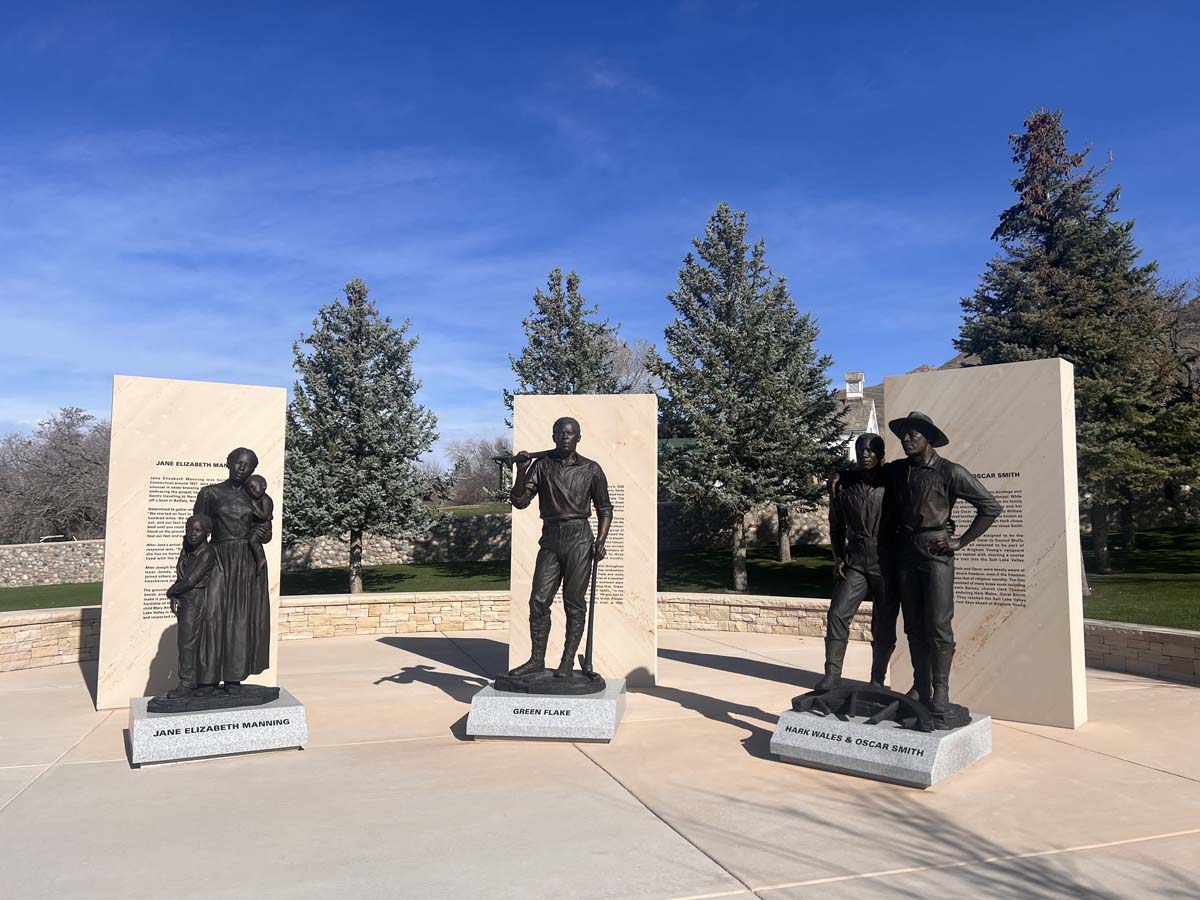
Topaz
In the fall of 2014, I curated the inaugural exhibition of the Topaz Museum, a long-awaited historical commemorative institution memorializing the site that imprisoned persons of Japanese descent during the Second World War. I had the remarkable opportunity to investigate the art made by those imprisoned at the camp, and the artists who created and maintained the Topaz art school. Focusing on five major artists from Topaz, my exhibition, When Words Weren’t Enough: Works on Paper from Topaz, 1942-1945, ran from January 13-September 30, 2015, and featured nearly a hundred works on paper. In addition to showcasing the breadth and creativity of each artist’s work, I sought to educate our audience about the various techniques these artists—both established and emerging—were using with very limited means inside the camp. While the work artists like Chiura Obata and Miné Okubo made during their time at Topaz is searing and unforgettable, it’s crucial to remember that these artists are generations apart and had full lives before and after their short time at Topaz. Their talents deserve to be recognized not merely for the trauma they experienced there but for how such work can educate those unaware of this history.
After the show in 2015, Utah institutions continued exhibiting the work of artists who were imprisoned in Topaz. In 2018, the Utah Museum of Fine Arts was selected as the second location for the exhibition, Chiura Obata: An American Modern, a sweeping collection of one hundred and fifty works by the legendary artist, many of which had never been displayed previously. Building off the momentum of this exhibition, in 2021, the UMFA acquired thirty-five works from the Obata estate and received a conservation grant to restore one of Obata’s four-paneled screens. In March of this year, the museum announced that in 2022, conservators discovered previously unearthed preparatory charcoal drawings hidden within the screen. The museum plans to display the preserved screen along with the drawings.
In Dalton Wells, Utah—approximately thirteen miles from the scenic wonder of Moab—a temporary exhibition is also shedding light on the Moab Isolation Center, a little-known prison camp for dissidents from other internment sites. The site of the former camp, which at its peak housed around fifty inmates, is highlighted within a new Utah Raptor State Park, as part of a city collaboration with Utah State Parks. On March 28, the Moab Museum also featured a presentation by Chiura Obata’s granddaughter Kimi Hill, who spoke about her grandfather’s pioneering legacy.
On February 24 of this year, another significant exhibition debuted at UMFA, Pictures of Belonging: Miki Hayakawa, Hisako Hibi, and Miné Okubo, curated by ShiPu Wang and organized by the Japanese American National Museum in Los Angeles. This exhibition is the first to highlight the work of three significant female artists of this era together. The show focuses on three Japanese American artists, two of whom—Hibi and Okubo—were incarcerated at Topaz. The exhibition excels in demonstrating how each artist was not just an observer of their respective realities, but also practitioners of the modernist styles pervading European art in the decades preceding the Second World War. As if recognizing the dual identities that barred their worthy consideration—as both female and non-white artists—these artists depict their own realities and that of other marginalized populations. After encountering the three artists’ work almost exclusively in relation to their male counterparts, Wang embarked on twenty years of archival research to uncover a more comprehensive story. Importantly, the time each of these artists spent incarcerated during the Second World War is but a portion of their overall legacies. Indeed, the stylistic variety on display in their work is remarkable, ranging from Hayakawa’s compelling portraits to Hibi’s searing landscapes and Okubo’s experimental abstracted narratives.
Undoubtedly, there is so much more that can be discovered about how racially and ethnically diverse artists in Utah have shaped the state’s historical legacy. In my lifetime, I have seen increasing efforts to bring forth these histories not just as emblematic of said cultures as a monolith, but instead as an effort to craft a more comprehensive understanding of American history itself, which for too long has been seen, just as art history’s Western canon, as something predefined, fixed in time and space. To start, creating spaces and opportunities for persons of color to write, curate, and research is crucial. And finally, institutions and majority populations must embrace the sort of vulnerability that comes from knowing that they have, either historically or presently, played a role in the disenfranchisement of ethnic and racial minorities and despite this, to continue searching for ways to promote often neglected stories even if doing so will rightfully make many of us uncomfortable.
